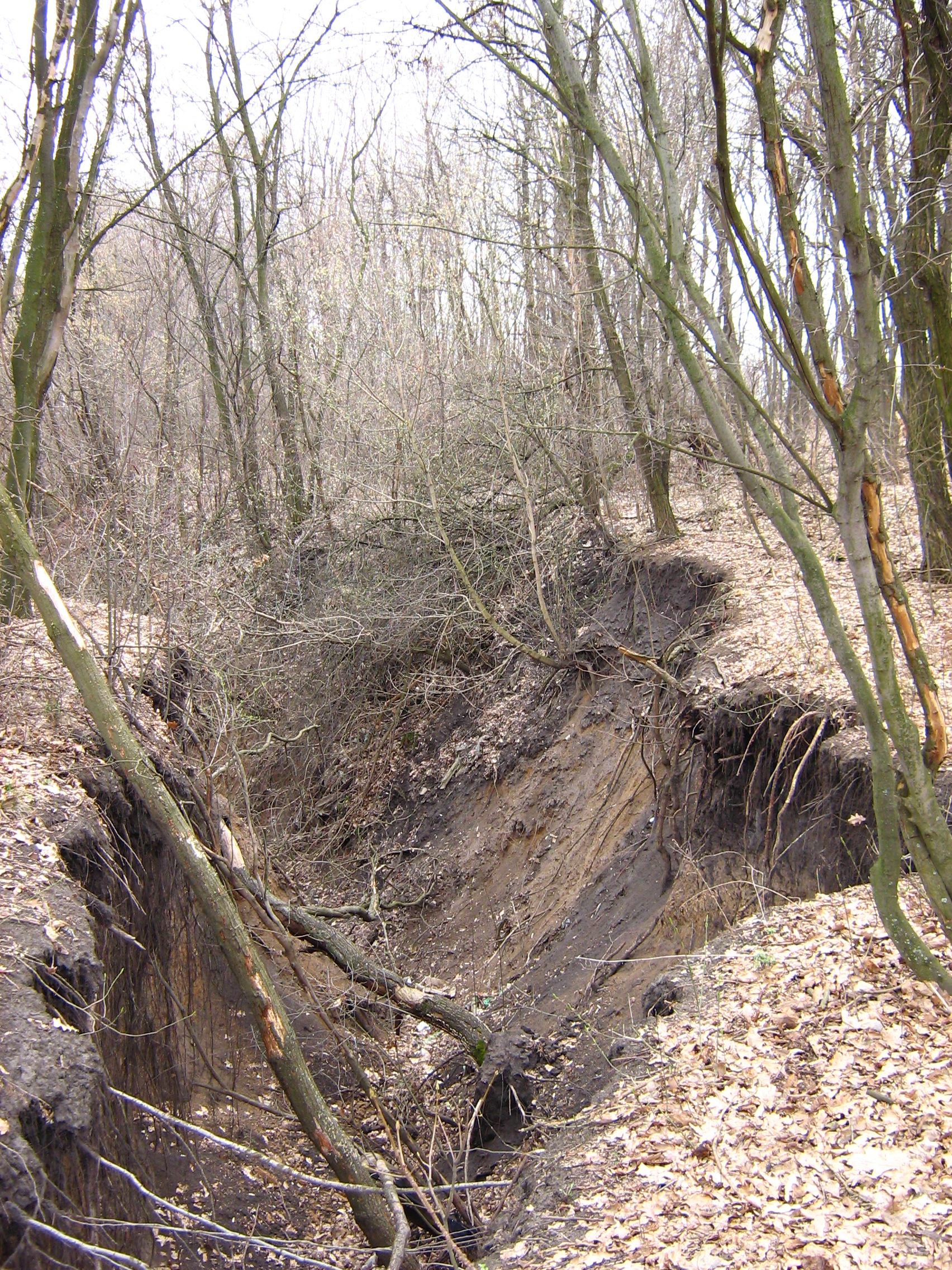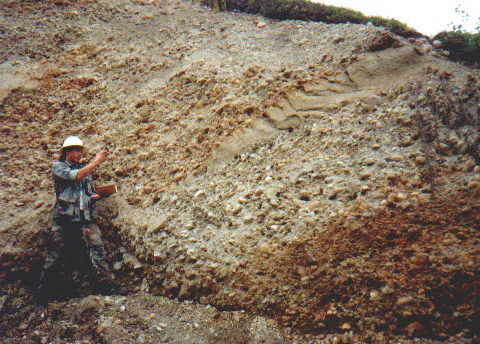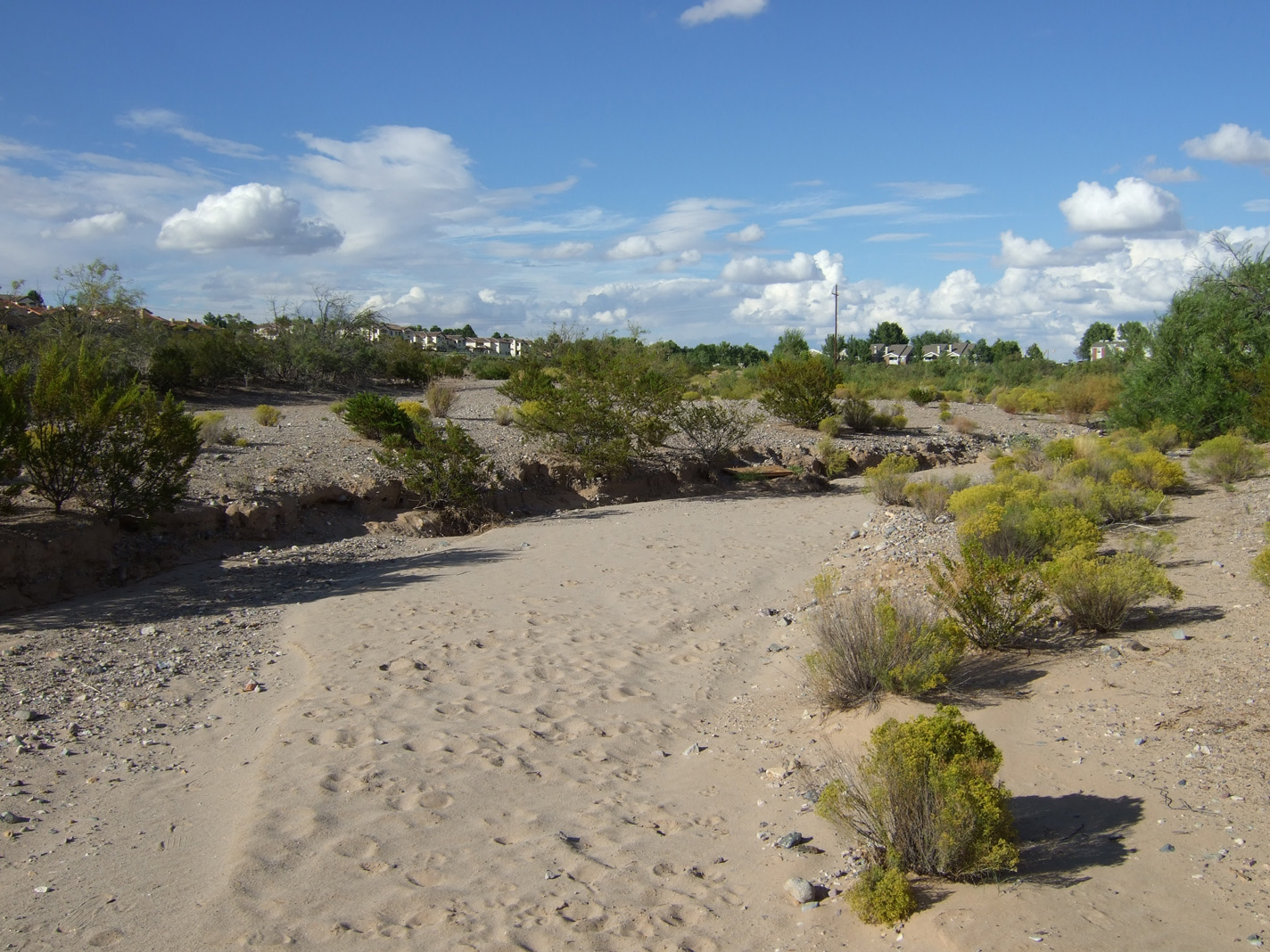|
Ubehebe Craters
The Ubehebe Craters are a volcanic field in the northern Death Valley of California, consisting of 14–16 craters in a area. The largest of the craters is the wide and deep Ubehebe Crater. Many of the craters, though, are partially buried and thus poorly recognizable. Other volcanic features there include a remnant of a scoria cone and a tuff cone. The Ubehebe Craters are associated with a fault system that runs across them. The region has been affected by volcanism for the last 10 million years. The volcanic field is in the Death Valley National Park and is accessible to tourists. The fault system is within the tectonically active Basin and Range Province physiographic region. Various estimates have been put forward for the age of the craters. Recent research has shown that the Ubehebe Craters all formed in a single phreatomagmatic eruption episode about 2,100 years ago, making it one of the most recent volcanic events in southern California. The risk of renewed ... [...More Info...] [...Related Items...] OR: [Wikipedia] [Google] [Baidu] |
Tin Mountain
Tin Mountain is an summit in the Panamint Range in northern Death Valley National Park Death Valley National Park is an American national park that straddles the California–Nevada border, east of the Sierra Nevada. The park boundaries include Death Valley, the northern section of Panamint Valley, the southern section of Eureka ..., California, located north of Teakettle Junction. See also * List of mountain peaks of California References {{InyoCountyCA-geo-stub Mountains of Inyo County, California Mountains of Death Valley National Park North American 2000 m summits ... [...More Info...] [...Related Items...] OR: [Wikipedia] [Google] [Baidu] |
Volcanic Ash
Volcanic ash consists of fragments of rock, mineral crystals, and volcanic glass, created during volcanic eruptions and measuring less than 2 mm (0.079 inches) in diameter. The term volcanic ash is also often loosely used to refer to all explosive eruption products (correctly referred to as '' tephra''), including particles larger than 2 mm. Volcanic ash is formed during explosive volcanic eruptions when dissolved gases in magma expand and escape violently into the atmosphere. The force of the gases shatters the magma and propels it into the atmosphere where it solidifies into fragments of volcanic rock and glass. Ash is also produced when magma comes into contact with water during phreatomagmatic eruptions, causing the water to explosively flash to steam leading to shattering of magma. Once in the air, ash is transported by wind up to thousands of kilometres away. Due to its wide dispersal, ash can have a number of impacts on society, including animal and h ... [...More Info...] [...Related Items...] OR: [Wikipedia] [Google] [Baidu] |
Dry Lake
A dry lake bed, also known as a playa, is a basin or depression that formerly contained a standing surface water body, which disappears when evaporation processes exceeds recharge. If the floor of a dry lake is covered by deposits of alkaline compounds, it is known as an alkali flat. If covered with salt, it is known as a '' salt flat.'' Terminology If its basin is primarily salt, then a dry lake bed is called a '' salt pan'', ''pan'', or ''salt flat'' (the latter being a remnant of a salt lake). ''Hardpan'' is the dry terminus of an internally drained basin in a dry climate, a designation typically used in the Great Basin of the western United States. Another term for dry lake bed is ''playa''. The Spanish word ''playa'' () literally means "beach". Dry lakes are known by this name in some parts of Mexico and the western United States. This term is used e.g. on the Llano Estacado and other parts of the Southern High Plains and is commonly used to address paleolake sediments ... [...More Info...] [...Related Items...] OR: [Wikipedia] [Google] [Baidu] |
Gullies
A gully is a landform created by running water, mass movement, or commonly a combination of both eroding sharply into soil or other relatively erodible material, typically on a hillside or in river floodplains or terraces. Gullies resemble large ditches or small valleys, but are metres to tens of metres in depth and width and are characterised by a distinct 'headscarp' or 'headwall' and progress by headward (i.e. upstream) erosion. Gullies are commonly related to intermittent or ephemeral water flow usually associated with localised intense or protracted rainfall events, or snowmelt. Gullies can be formed and accelerated by cultivation practices on hillslopes (often gentle gradient) in farmland, and they can develop rapidly in rangelands from existing natural erosion forms subject to vegetative cover removal and livestock activity. Etymology The earliest known usage of the term is from 1657. It originates from the French word ''goulet'', a diminutive form of ''goule'' which ... [...More Info...] [...Related Items...] OR: [Wikipedia] [Google] [Baidu] |
Slump (geology)
A slump is a form of mass wasting that occurs when a coherent mass of loosely consolidated materials or a rock layer moves a short distance down a slope. Movement is characterized by sliding along a concave-upward or planar surface. Causes of slumping include earthquake shocks, thorough wetting, freezing and thawing, undercutting, and loading of a slope. Translational slumps occur when a detached landmass moves along a planar surface. Common planar surfaces of failure include joints or bedding planes, especially where a permeable layer overrides an impermeable surface. Block slumps are a type of translational slump in which one or more related block units move downslope as a relatively coherent mass. A rotational slump occurs when a slump block, composed of sediment or rock, slides along a concave-upward slip surface with rotation about an axis parallel to the slope. Rotational movement causes the original surface of the block to become less steep, and the top of the slump is ro ... [...More Info...] [...Related Items...] OR: [Wikipedia] [Google] [Baidu] |
Basement (geology)
In geology, basement and crystalline basement are crystalline rocks lying above the mantle and beneath all other rocks and sediments. They are sometimes exposed at the surface, but often they are buried under miles of rock and sediment. The basement rocks lie below a sedimentary platform or cover, or more generally any rock below sedimentary rocks or sedimentary basins that are metamorphic or igneous in origin. In the same way, the sediments or sedimentary rocks on top of the basement can be called a "cover" or "sedimentary cover". Crustal rocks are modified several times before they become basement, and these transitions alter their composition. Continental crust Basement rock is the thick foundation of ancient, and oldest, metamorphic and igneous rock that forms the crust of continents, often in the form of granite. Basement rock is contrasted to overlying sedimentary rocks which are laid down on top of the basement rocks after the continent was formed, such as sandstone and ... [...More Info...] [...Related Items...] OR: [Wikipedia] [Google] [Baidu] |
Tuff Ring
Phreatomagmatic eruptions are volcanic eruptions resulting from interaction between magma and water. They differ from exclusively magmatic eruptions and phreatic eruptions. Unlike phreatic eruptions, the products of phreatomagmatic eruptions contain juvenile (magmatic) clasts.Heiken, G. & Wohletz, K. 1985. Volcanic Ash. University of California Press, Berkeley It is common for a large explosive eruption to have magmatic and phreatomagmatic components. Mechanisms Several competing theories exist as to the exact mechanism of ash formation. The most common is the theory of explosive thermal contraction of particles under rapid cooling from contact with water. In many cases the water is supplied by the sea, for example with Surtsey. In other cases the water may be present in a lake or caldera-lake, for example Santorini, where the phreatomagmatic component of the Minoan eruption was a result of both a lake and later the sea. There have also been examples of interaction between magma ... [...More Info...] [...Related Items...] OR: [Wikipedia] [Google] [Baidu] |
Alluvium
Alluvium (from Latin ''alluvius'', from ''alluere'' 'to wash against') is loose clay, silt, sand, or gravel that has been deposited by running water in a stream bed, on a floodplain, in an alluvial fan or beach, or in similar settings. Alluvium is also sometimes called alluvial deposit. Alluvium is typically geologically young and is not consolidated into solid rock. Sediments deposited underwater, in seas, estuaries, lakes, or ponds, are not described as alluvium. Floodplain alluvium can be highly fertile, and supported some of the earliest human civilizations. Definitions The present consensus is that "alluvium" refers to loose sediments of all types deposited by running water in floodplains or in alluvial fans or related landforms. However, the meaning of the term has varied considerably since it was first defined in the French dictionary of Antoine Furetière, posthumously published in 1690. Drawing upon concepts from Roman law, Furetière defined ''alluvion'' (the F ... [...More Info...] [...Related Items...] OR: [Wikipedia] [Google] [Baidu] |
Maar
A maar is a broad, low-relief volcanic crater caused by a phreatomagmatic eruption (an explosion which occurs when groundwater comes into contact with hot lava or magma). A maar characteristically fills with water to form a relatively shallow crater lake which may also be called a maar. The name comes from a Moselle Franconian dialect word used for the circular lakes of the Daun area of Germany. Notes: * According to German Wikipedia's ''"Maar"'' article, in 1544 in his book ''Cosmographia'', Sebastian Münster (1488–1552) first applied the word "maar" (as ''Marh'') to the Ulmener Maar and the Laacher See. See: Sebastian Münster, ''Cosmographia'' (Basel, Switzerland: Heinrich Petri, 1544)p. 341. From p. 341: ''"Item zwen namhafftiger seen seind in der Eyfel / einer bey de schloß Ulmen / und ein ander bey dem Closter züm Laich / die seind sere tieff / habe kein ynflüß aber vil außflüß / die nennet man Marh unnd seind fischreich."'' (Also two noteworthy lakes ... [...More Info...] [...Related Items...] OR: [Wikipedia] [Google] [Baidu] |
Arroyo (creek)
An arroyo (; from Spanish arroyo , "brook"), also called a wash, is a dry creek, stream bed or gulch that temporarily or seasonally fills and flows after sufficient rain. Flash floods are common in arroyos following thunderstorms. '' Wadi'' (Arabic) is used in North Africa and Western Asia for similar landforms. The desert dry wash biome is restricted to the arroyos of the southwestern United States. Arroyos provide a water source to desert animals. Types and processes Arroyos can be natural fluvial landforms or constructed flood control channels. The term usually applies to a sloped or mountainous terrain in xeric and desert climates. In addition: in many rural communities arroyos are also the principal transportation routes; and in many urban communities arroyos are also parks and recreational locations, often with linear multi-use bicycle, pedestrian, and equestrian trails. Flash flooding can cause the deep arroyos or deposition of sediment on flooded lands. ... [...More Info...] [...Related Items...] OR: [Wikipedia] [Google] [Baidu] |
Las Vegas
Las Vegas (; Spanish language, Spanish for "The Meadows"), often known simply as Vegas, is the List of United States cities by population, 25th-most populous city in the United States, the most populous city in the U.S. state, state of Nevada, and the county seat of Clark County, Nevada, Clark County. The city anchors the Las Vegas Valley metropolitan area and is the largest city within the greater Mojave Desert. Las Vegas is an internationally renowned major resort town, resort city, known primarily for its gambling, shopping, fine dining, entertainment, and nightlife. The Las Vegas Valley as a whole serves as the leading financial, commercial, and cultural center for Nevada. The city bills itself as The Entertainment Capital of the World, and is famous for its luxurious and extremely large casino-hotels together with their associated activities. It is a top three destination in the United States for business conventions and a global leader in the hospitality industry, clai ... [...More Info...] [...Related Items...] OR: [Wikipedia] [Google] [Baidu] |







